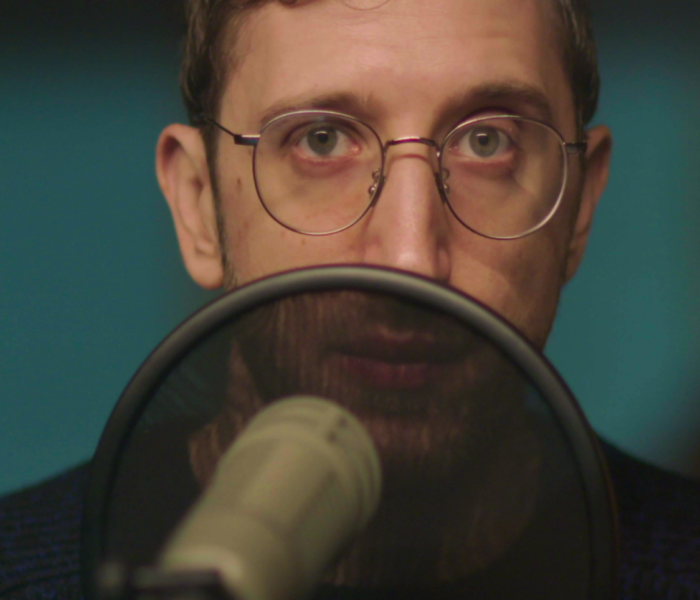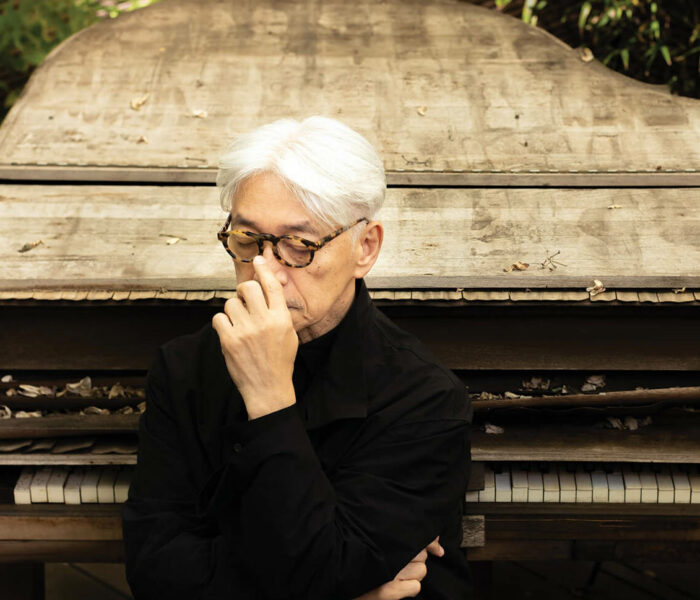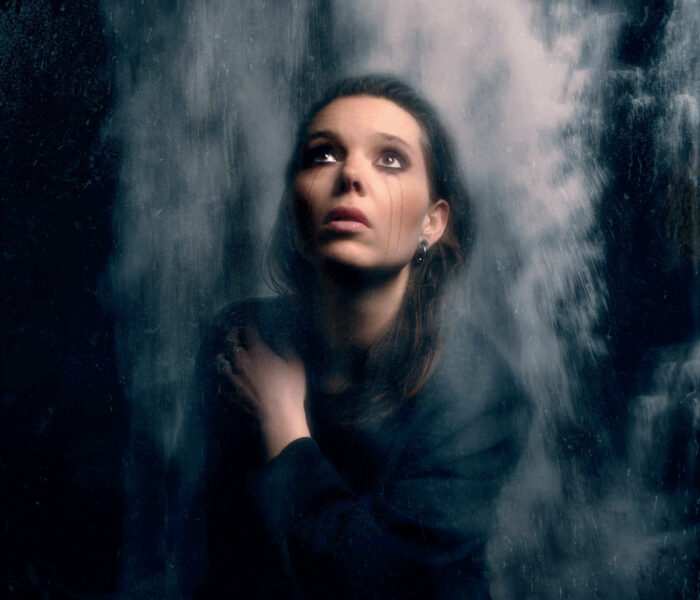Parus à quelques mois d’intervalles, deux ouvrages signés Juliette Volcler et Daniel Deshays auscultent ce champ du sonore qui nous environne et entreprennent de démêler les menaces qui pèsent sur la manière dont nous le percevons, venues le plus souvent du monde économique ; et soulignent combien le son peut être un authentique vecteur d’émancipation et de relation.
C’est un signe encourageant en même temps qu’un symptôme possible de l’état de notre monde saturé (suturé ?) de sonals et autres sollicitations visuelles et auditives(1) : ces dernières années, le domaine des sound studies semble enfin faire l’objet d’un regain d’intérêt en France, si l’on en juge par la prolifération (tout est relatif) d’ouvrages sur le son et son corollaire, l’écoute. Après la très belle Histoire naturelle du silence publiée en avril dernier par l’éco-acousticien Jérôme Sueur dans la collection « Mondes sauvages » d’Actes Sud, deux livres sont récemment venus nourrir une réflexion qui dut pendant longtemps se cantonner à l’essai fondateur de Raymond Murray Schaffer, Le Paysage sonore, datant de 1977, et au Silence de John Cage (1970). Ces deux livres ont en commun d’émaner de deux personnes – Juliette Volcler et Daniel Deshays – qui, au-delà de leur différence d’âge et de genre ne sont pas des chercheurs patentés, bardés des lettres de noblesse universitaire qui s’imposent généralement ; deux personnes qui, manifestement, se connaissent et s’estiment (Juliette Volcler a interviewé Daniel Deshays, qui lui-même la cite dans son ouvrage). Si Daniel Deshays, est – on y reviendra – un praticien émérite, pionnier de la prise de son, qui n’a cessé de réfléchir et de faire partager sa pratique, Juliette Volcler de son côté revendique fièrement son statut de chercheuse indépendante.
L’uniformisation du sonore
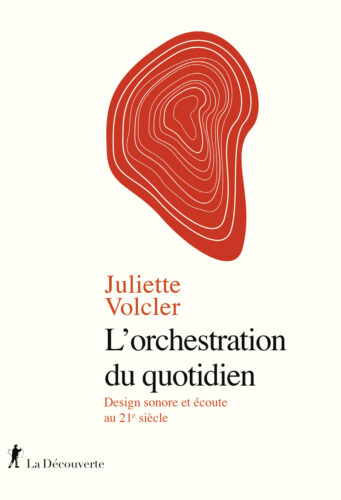
Venue au son par la pratique de la radio et sa participation active à Syntone, passionnante « revue de l’écoute » qui semble avoir malheureusement cessé ses activités, Juliette Volcler s’intéresse plus particulièrement à la manière dont le capitalisme aseptise, assigne et assujettit notre environnement sonore contemporain, ambitionnant de contribuer à éveiller une écoute critique, voire politique. Après Le son comme arme. Les usages policiers et militaires du son (2011) et Contrôle. Comment s’inventa l’art de la manipulation sonore (2017), elle a fait paraître au printemps dernier, toujours aux éditions de La Découverte, L’Orchestration du quotidien. Sous-titré « Design sonore et écoute au 21e siècle », ce nouveau volet prolonge sa réflexion en une suite de chapitre brefs, rythmés par un ton alerte et facétieux : de mini-enquêtes centrées sur les multiples déclinaisons industrielles du design sonore au cours du XXe siècle – de l’automobile au tramway, de l’espace urbain à la signalétique sonore des ordinateurs – alternent avec des chapitres au propos plus réflexif et « théorique ». Et c’est avant tout par sa dimension « documentaire » et journalistique que l’ouvrage séduit – on y glane en effet une foule d’informations sur les coulisses de la fabrication de notre environnement sonore quotidien, principalement urbain –, ainsi que par la liberté avec laquelle l’auteure opère des rapprochements « entre des époques, des pratiques, des secteurs ou des objets auparavant isolés » (dixit la 4e de couverture). Décrite par Juliette Volcler, l’ère de la « sonorisation généralisée de la vie quotidienne » semble bel et bien être aussi celle de la standardisation de nos comportements auditifs, et de l’arraisonnement de notre « temps d’écoute disponible » par la main invisible du marketing ; arraisonnement du design sonore lui-même, transformé en un outil de contrôle social autoritaire et normatif, fondé sur une conception mécaniste du comportement humain. S’il est résolument à charge (on ne saurait lui donner tort), parfois au risque de la mauvaise foi(2), son propos s’avère souvent percutant, qui amène à s’interroger sur cette standardisation en cours, qui ne laisse que peu de place à la liberté, que ce soit celle de l’écoute ou celle de la création : on se plaît à rêver par exemple d’un monde où les prototypes de réveille-matin ou de sirène de police vainement développés par le grand Max Neuhaus auraient fini par être adoptés…

Il s’agit aujourd’hui de fabriquer « du commun » plutôt que « des bulles », conclut l’auteure, de faire primer l’artisanat sur l’industrie. Même si à partir du moment où il est émis dans l’espace public, le son, quel qu’il soit, s’avère fondamentalement ambigu : on ne pense pas tant à ces enceintes débitant de la musique qui envahissent les centres (historiques ou commerciaux) de certaines villes moyennes, ou les salles d’attentes en tout genre, qu’au revers de toute innovation technologique, qui fait que l’émancipation des uns peut devenir pour les autres source de pollution ; dans le cas des transistors portables des années 1960 ou des enceintes Bluetooth aujourd’hui, où commence le commun, où finit la bulle ?
L’ouvrage ne prétend pas être une synthèse exhaustive – on aurait pu prolonger à l’envi la liste d’initiatives de « fabrique du commun » évoquées dans le dernier chapitre bien au-delà des deux seuls exemples qu’elle détaille, car force est de reconnaître le réjouissant foisonnement de balades sonores, massages sonores et autres propositions d’expériences acoustiques émancipatrices et collectives dans les programmations des institutions culturelles. On pourra regretter au passage que Juliette Volcler, tout en insistant à juste titre sur la sous-représentation des femmes dans le monde du design sonore, ne se soit pas intéressée à des figures telles que Suzanne Ciani – pionnière méconnue de la musique électronique qui a par ailleurs gagné sa vie en travaillant comme « designeuse sonore » dans la publicité, notamment pour Coca-Cola – ou l’artiste sonore Christina Kubisch – dont les Electrical Walks mettent à jour les sons d’ordinaire inaudibles (ceux des ondes magnétiques qui saturent sans bruit notre environnement quotidien).
On aurait aussi aimé qu’elle s’attarde davantage sur l’activité de l’entreprise Muzak (mais elle l’a déjà fait dans Contrôle) ou sur la figure de Brian Eno, évoquée seulement au travers de sa collaboration avec Microsoft pour la conception du sonal du système d’exploitation de Windows : descendante de la « musique d’ameublement » d’Erik Satie, la musique ambient – cette musique « aussi facile à ignorer qu’intéressante à écouter » qu’Eno a conceptualisée dans les années 1970 – aurait mérité de plus amples développement (Daniel Deshays, lui non plus, ne s’attarde guère sur le sujet), tant elle semble se situer à l’exacte intersection de l’art et du design. On aurait aimé également lire ce que Juliette Volcler pense du boom actuel de l’ASMR (Autonomous sensory meridian response)…
En fait, c’est sans doute la promesse de son sous-titre qui s’avère dans ce livre déceptive et source de frustration. Car Juliette Volcler, qui finit par conclure sur l’impossibilité de donner du design sonore une définition satisfaisante, n’échappe pas toujours aux contradictions, par exemple lorsqu’elle brocarde une « fonctionnalité » qui est pourtant la raison d’être même du design. Et lorsqu’elle évoque les podcasts – pour déplorer leurs modes de production de plus en plus industriels –, ne s’éloigne-t-elle pas quelque peu de son sujet ? Ou alors, il aurait justement fallu tenter de préciser la ligne de démarcation entre design et création artistique – et s’attarder sur la nature du design sonore. Celui-ci ne produisant pas d’objets, ses applications ne sont-elles pas, par la force des choses, plus restreintes, et ses auteurs, voués à destiner leurs prototypes aux commandes de l’industrie ? De même, la question de l’écoute n’est que très peu abordée, en toute fin d’ouvrage : on aurait aimé que l’auteure développe davantage ses évocations de la psychoacoustique ou de l’« écoute atmosphérique »… Peut-être ces questions seront-elles au cœur des futurs travaux de Juliette Volcler. Quoi qu’il en soit, ces réserves ne diminuent en rien le caractère hautement stimulant d’un ouvrage qui, en révélant les coulisses de la fabrique de notre quotidien sonore, esquisse un vibrant plaidoyer en faveur de la liberté d’écoute.
Le partage du sensible
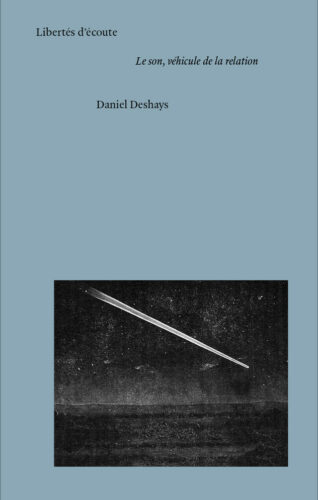
Libertés d’écoute : c’est justement le titre de l’ouvrage que Daniel Deshays a fait paraître il y a quelques semaines dans l’excellente collection « Répercussions » de Musica Falsa. Comme ses précédents livres, celui-ci est plutôt un recueil, qui regroupe en grands blocs thématiques des écrits jusque-là épars, augmentés de brefs poèmes qui ne font que mieux souligner la tonalité d’ensemble.
Daniel Deshays est, on l’a dit, avant tout un praticien. Un praticien qui n’a cessé de s’appliquer à partager, de vive voix ou par ses écrits, sa quête, autrement dit sa recherche, son inlassable auscultation de la nature du sonore. Comme le souligne Marie-Madeleine Mervant-Roux dans sa très belle postface, l’originalité du parcours de Deshays tient à ce que celui-ci s’origine, s’enracine dans le théâtre : s’il a également beaucoup travaillé avec les cinéastes (de Chantal Akerman à Tariq Teguia) et les musiciens (on le croise sur 255 disques, dont ceux de Jac(ques) Berrocal), Daniel Deshays s’est avant tout illustré sur les plateaux de théâtre, notamment aux côtés d’Alain Françon. Marie-Madeleine Mervant-Roux le relève : « Une telle perspective confère à sa réflexion quelque chose d’unique dans le champ des études sonores, dans la mesure où elle s’oppose aux trois grands a priori qui y règnent, parfois ensemble, parfois séparément, la plupart du temps implicites, souvent impensés : l’acceptation – plus ou moins nuancée – du modèle musical ; l’acceptation – rarement nuancée – de l’idée selon laquelle le sonore est fondamentalement non verbal ; l’acceptation – fréquente – de l’idée selon laquelle l’étude du son pourrait s’effectuer uniquement à partir d’enregistrements, sans attention particulière aux événements acoustiques initiaux et à leurs ‘prises’. » C’est que selon Deshays, le théâtre est peut-être le lieu où se peut le mieux capter le son tel qu’en lui-même, par nature « événementiel, mouvant et chaotique ».
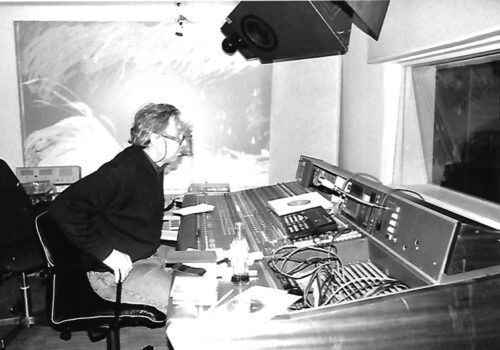
Daniel Deshays, comme Juliette Volcler, a lui aussi ses chevaux de bataille. L’obsession technologique de notre époque en est une, et ce culte panique de la « nouveauté technique » : l’inflation de machines à l’obsolescence de plus en plus programmés, notamment numériques, et notre fascination pour cette promesse toujours renouvelée de la technique, nous fait perdre de vue l’essentiel, et prendre le médium pour un concept. S’il identifie notre « désir d’écouter », il observe combien les « dispositifs médiatiques ont fini par détricoter les liens collectifs pour les réduire à des liens différés ».
Comme l’annonce son sous-titre – « Le son comme relation » – en effet, le propos de Daniel Deshays est avant tout ici d’envisager le son dans sa dimension relationnelle. D’insister sur la manière dont l’écoute excelle à « tisser un réseau reliant chacun » : « L’écoute nous tient fortement par l’imaginaire qu’elle produit. Ainsi, c’est en tenant au loin le visible que la proximité surgit. L’oreille est la voix de l’intime. C’est hors de la présence visuelle d’un corps que la voix prend force et que l’écoute devient active. Consécutivement, la parole, celle qui n’aurait pu être exprimée de visu, s’embraye. Il y a parole parce qu’il y a écoute et ça n’est qu’à cette condition que l’écoute peut se développer. »
Dans un style d’une grande élégance, c’est en phénoménologue que Daniel Deshays articule ici une réflexion d’une singulière clairvoyance. En poète également, et en sage, qui jamais ne donne dans le « c’était mieux avant ». Il est au fait des technologies les plus innovantes, en prise directe avec son temps. Simplement, il sait aussi que, de même qu’à la source de tout son il y a un geste, une intention voire une adresse, le secret d’une prise de son réussie réside en premier lieu dans le choix de l’outil – le choix de l’outil adéquat au but que l’on poursuit. S’il se montre méfiant vis-à-vis des visées mystiques d’un Murray Schafer, sa foi en les potentialités culturelles et politiques – émancipatrices – des « objets sonnants » n’en paraît pas moins, in fine, empreinte d’une forme de sagesse quasi orientale, habitée qu’elles demeure par l’inlassable désir d’envisager le sonore d’une manière plus écologique.
David Sanson
1) Et l’on songe à ces paroles prophétiques de Pierre Schaeffer, en 1950, dans sa préface au livre de Stéphane Cordier La radio, reflet des temps, relevées sur le site de Syntone : « Un de ces jours, on risque de voir l’humanité comme branchée sur elle-même, en proie à ce que les techniciens appellent ‘Effet Larsen’, cette fois de proportion gigantesque. L’énorme sifflement du vide menace une humanité qui ne fait que s’écouter et se dévisager dans ses micros et ses caméras… »
2) Par exemple lorsqu’elle ironise sur les discours ronflants produits par les différents concepteurs du design sonore du tramway parisien pour justifier leur parti pris : car non seulement ses concepteurs sont d’authentiques artistes, mais surtout, qu’il s’agisse d’un appel d’offre émanant de l’industrie ou d’un appel à création lancé par un lieu de diffusion artistique, fût-il le plus underground, il est systématiquement attendu des créateurs qu’ils justifient leur démarche en produisant un discours, en des termes qui certes n’échappent pas au formatage.



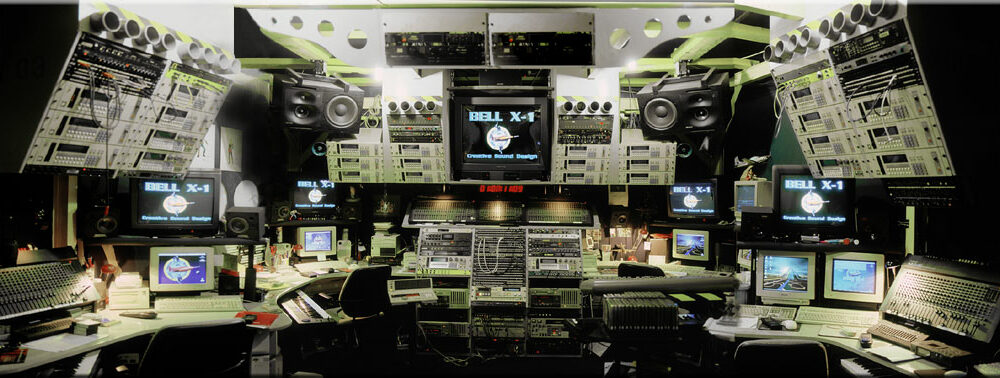)
